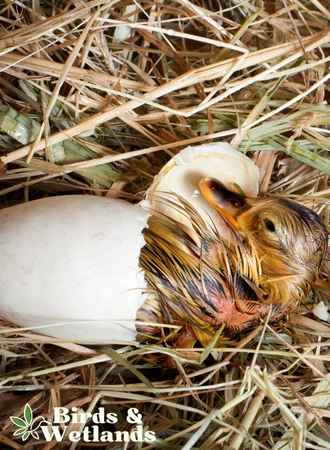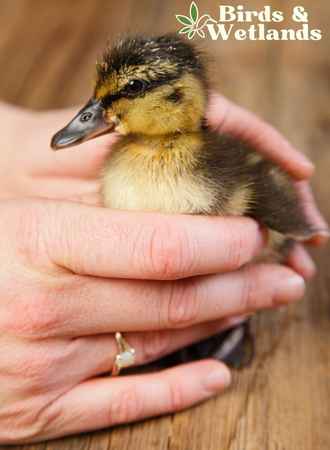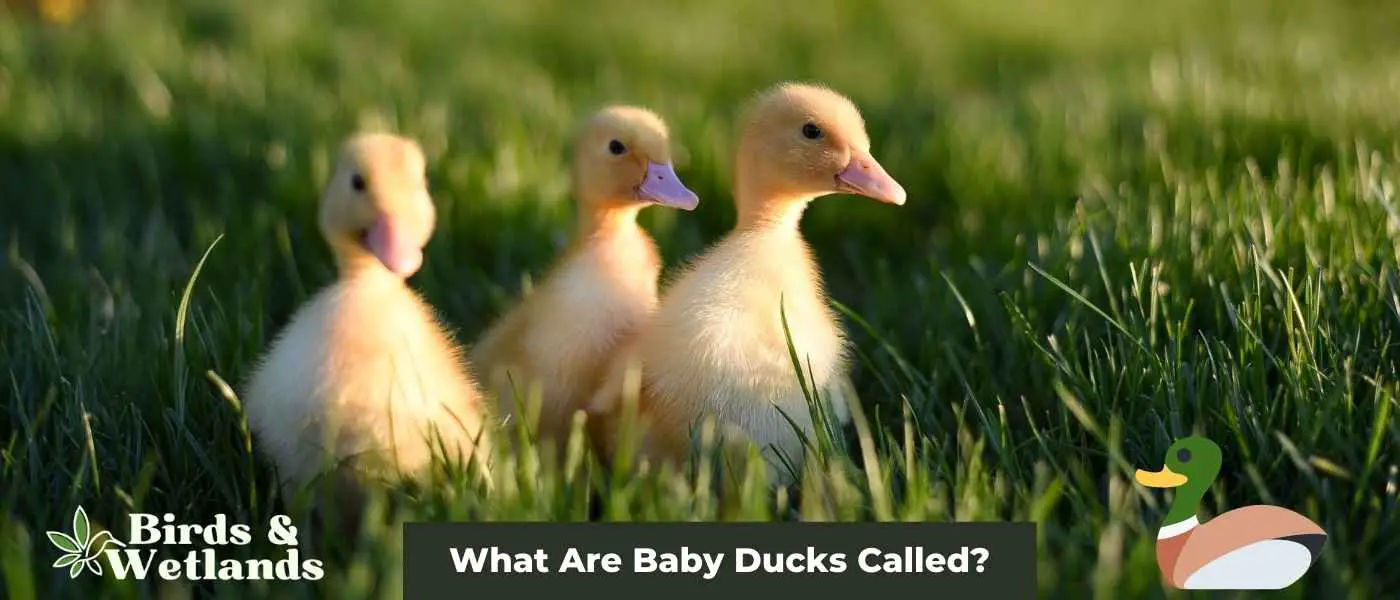Baby ducks are incredibly cute, and it’s no wonder many people want to know what they’re called!
Baby ducks are commonly referred to as “ducklings.” This term is used from the time they hatch until they mature into adults. The period of time a duck is considered a duckling can vary, but generally, they start to lose their baby features and look more like adult ducks by the time they’re about 2 months old.
Key Takeaways on What Is a Baby Duck Called
Duck chicks or Baby ducks are called ducklings and a group of baby ducks is called a brood. A group of ducks in flight is called a flock but if they are in the water, they are called a raft or paddling.
Ducklings are not born with feathers after hatching. Instead, a duckling is born covered in a layer of downy plumage that helps to keep it warm and provides protection while it grows its outer feathers.
Baby ducks depend completely on their mother for warmth and care for the first week or so of their lives.
Once they are sexually mature, ducklings are considered adult ducks.
What is a group of baby ducklings called?
A group of baby ducks, or ducklings, is often referred to as a “brood.” When the ducklings are out on the water with their mother, they may also be called a “raft.” These terms are used to describe a closely knit group of ducklings, usually under the care of their mother.
10 interesting facts about ducklings
- Precocial Birds: Ducklings are “precocial,” which means they’re born with their eyes open and are covered in downy feathers. They can leave the nest and start swimming and foraging for food just hours after hatching.
- Imprinting: Ducklings “imprint” on their mother within the first few hours of their life. This process helps them identify the species they belong to and follow their mother for protection and learning.
- Self-feeding: Ducklings start to feed themselves immediately after they hatch. Their diet includes small insects, grass, aquatic plants, and seeds.
- Early Swimmers: Ducklings are born with a special waterproof feather coating, allowing them to swim shortly after hatching.
- Group Living: Ducklings usually stay together in a group, called a brood, with their mother for about two months until they are strong enough to fend for themselves.
- Predator Evasion: To escape predators, ducklings can dive and swim underwater for several meters.
- Counting Skills: Studies suggest that ducklings can comprehend simple concepts like “same” and “different,” and they may also be capable of abstract thought to a certain extent.
- Quick Growth: Ducklings grow fast. Within about a month, they start growing their flight feathers, and by two months, they can look almost like a smaller version of their adult counterparts.
- High Body Temperature: Ducklings maintain a body temperature of around 102 degrees Fahrenheit, which is higher than that of adult ducks.
- Vocal Communications: Ducklings begin to communicate vocally while still inside the egg. They can make soft peeping sounds, which become more frequent as the hatching process nears completion.
When Do Ducklings Hatch?

Ducklings typically hatch 28 to 30 days after the eggs are laid. During this period, female ducks will construct a nest for duck eggs and work hard to keep them warm and safe from predators.
When the baby birds hatch, they will break free from their eggshells through a process known as pipping. Pipping typically takes 24 to 48 hours, during which the mother duck remains vigilant, providing warmth and protection while watching for signs of danger.
Although born with a special circulatory system that protects them from cold temperatures, baby ducks or ducklings will stay close to their mother for several days as they learn to feed and care for themselves.
In this way, baby ducks can get a head start in life by utilizing the wealth of knowledge and experience that only their mother can provide. The vast majority of male ducks don’t spend much time with their young, opting to leave rearing to female ducks.
How Big Are Baby Ducks?
Baby ducks, also known as ducklings, are small animals typically measuring around 10cm in length. Due to the variation in size among duckling broods, some individuals may be slightly larger than others.
Ducklings mature quickly, reaching skeletal maturity in as little as 2 to 3 months. Male plumage develops more slowly and can take up to a year to fully develop.
Do Baby Ducks Quack?
Yes, baby ducks quack. This charming behavior is because they are naturally vocal creatures who tend to vocalize when they are happy, comfortable, or well-fed. Ducklings from vocal breeds are often more animated and may appear talkative compared to other ducklings.
Ducklings typically begin to quack at around two weeks of age, though their quacks may not sound exactly like adult ducks. Instead, they may sound more like a peep or a cross between a peep and a quack.
How Much Do Baby Ducks Weigh?

While the weight of ducklings varies depending on the type of duck, they are generally on the smaller side.
For example, a young wood duck typically weighs 12 to 17 grams at birth, whereas Mallard ducklings weigh 30 to 40 grams. A duckling’s initial weight can be affected by factors other than physical sizes, such as incubation temperature and brooding conditions.
How To Determine The Gender Of Baby Ducks
When determining the gender of baby ducks that live on farms, one of the first things to look at is the bird’s genitals. When accessing the vent area, fold the tail down and in the opposite direction and gently press upward to expose both the walls of the cloaca and the duckling’s genitals.
You’re dealing with a male duckling if you notice a protruding penis from the vent. If you see an oviduct opening in the vent wall orifice, you can be sure you’re dealing with a female duckling.
What Does a Baby Duck Look Like?
A baby duck resembles a small, fluffy bird with large webbed feet. Most ducklings of different species have this appearance, though there is some variation in coloration and other physical characteristics.
Mallard ducklings, for example, have yellow bellies and necks with darker downy feathers across their heads, wings, and backs, forming stripes that run the length of their bodies.
Ducklings from other species, such as the Pekin or Eider duck, are a bright blonde color. Wigeon ducklings are thinner and taller than most other ducklings.
Mallards are the most recognizable wild ducks in the Northern Hemisphere. Compared to the male’s showy feathers, the mottled brown female mallard appears drab.
Regardless of appearance, all baby ducks have two things in common: they hatch with a soft, thick layer of down feathers that provides insulation and protection from the elements, and they have large webbed feet that allow them to swim and maneuver easily in water. They still don’t have the special oil that makes their feathers waterproof.
What Do Baby Ducks Eat?

You may have noticed a group of ducklings at your local park or pond. Perhaps you have wondered, what exactly do wild baby ducks eat?
The answer lies in their omnivorous nature. Ducklings are opportunistic and eat anything they can find, including bugs, beetles and worms. These young ducks also eat aquatic plants like algae, seeds, or even discarded crackers or other bird food they forage on land. They may also eat small fish or snails if they come across them.
As backyard waterfowl, you can keep your baby ducks happy and healthy by feeding them a well-balanced diet that includes a variety of nutritious foods. Dandelion greens, chopped grass, weeds, worms, Swiss chard, kale, peas, and moistened oatmeal are among the most popular treats among domesticated ducklings.
When Can Baby Ducks Fly?
In general, baby ducks can fly after about 50-70 days. This period gives them enough time to develop their wings and flight muscles, which are necessary for flying.
There are some exceptions to this rule, such as if a duckling’s nest is destroyed sooner than expected or if it consumes fewer nutrients than other birds in its flock.
While most ducklings can achieve flight status in two months, some species may take longer.
Flight skills are important to many ducks and geese, especially for those that live up north. These waterfowl migrate south in search of warm weather during their winter migration. They go back to their breeding grounds where they mate and build nests in spring. A drake and hen will then breed and have babies.

